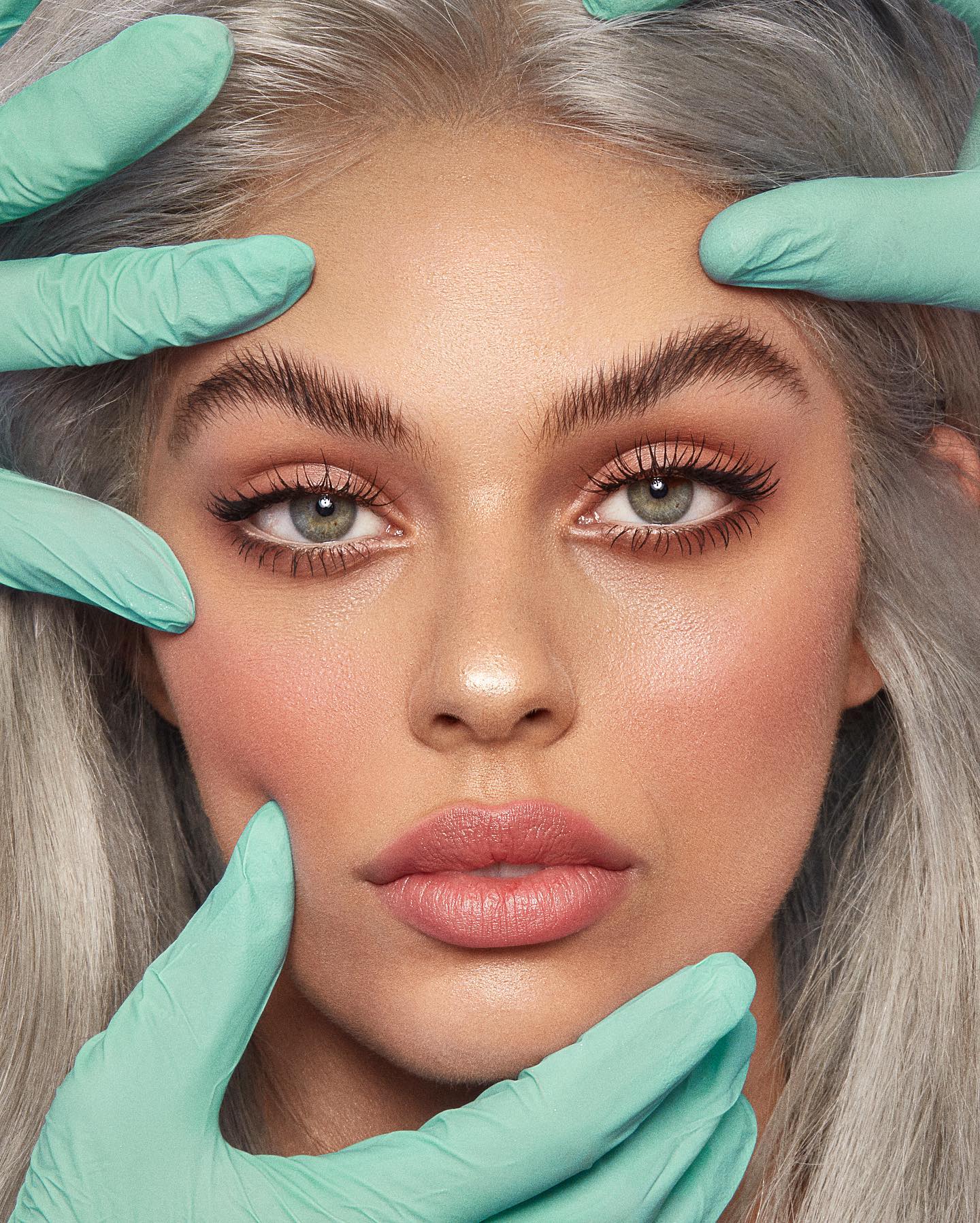
Katy Perry uses them to treat her under eye circles and they’re the secret to Kylie Jenner’s pout, while the likes of Courteney Cox and Khloé Kardashian have admitted to having theirs dissolved. Yes, we’re talking about fillers – the increasingly popular dermal injectables used for everything from jaw-line definition to younger-looking skin and, of course, pillowy pouts. But, do you actually know what fillers are, what they can be used for, or the risks involved? They might have become ‘normal’, super accessible and more affordable than ever, but there’s a lot you need to consider before going under the needle.
“Fillers are amazing for adding volume and enhancing the face and body, but with so much misinformation out there, it’s more important than ever that people educate themselves before booking in,” agrees Dr. Leonard Josipovic, Head of Plastic, Aesthetic & Reconstructive Surgery at Dubai’s famous Lucia Clinic. As a global trainer and speaker on all things injectables, as well as being one of the top doctors for fillers in Dubai at one of the best clinics in town, who better to ask every question you’ve ever had about fillers? From the benefits to the risks, the different types and different ways fillers can be used, read on to get your fill of fillers.
So, what exactly are fillers?
Filler is a general name for injectables used to fill lines and add volume to the face and the body. The most popular filler today is hyaluronic acid, which is an imitation of our natural HA. The same enzyme that dissolves the hyaluronic acid in our faces also dissolves this filler, and for that reason, this type of filler is not permanent. So, if you don’t like the result, you can use an enzyme to dissolve it, and your body naturally dissolves it over time.
For me, these are the best fillers because you have better control over them and better long-term results, and you can dissolve them in case of complications or a not satisfying aesthetic result.
Is dissolving filler easy? Is it painful?
Yes, it’s very easy to do, and when you dissolve fillers, you look like you’ve never done anything. In terms of pain, it really depends on the patient and the area you’re dissolving.
What other types of filler are there?
There are calcium hydroxyapatite fillers, and new hybrid fillers are coming to the market.
Where can you use fillers?
There are so many possibilities with fillers, and they can be used for a wide range of purposes. In the face, you can use them in the lips, neck, under eyes, to change the shape of a nose… Anywhere you want to smooth lines and create volume. You can also use them in the body, for example in the buttocks and hands.
Can anyone have fillers?
Everyone can get fillers except pregnant women, breastfeeding women and patients suffering from degenerative diseases.

Are there any risks?
Like with any injectables, there’s the risk of infection. In rare cases, late-onset granuloma occurs, which is a reaction that happens six months to a year later and results in lumps. You can also have a tunnel effect where you can see the filler under the skin if it’s placed superficially.
Extremely rarely, necrosis can occur. This is when areas lose their blood supply and the tissue dies. That can happen, even with hyaluronic acid. But, as an expert, you are able to see if you inject it wrongly, and – with HA – you can dissolve it immediately.
All these complications we can deal with. It all depends on the skills and knowledge of the injector.
What’s a big misconception about filler?
The biggest misconception about filler is that it always looks fake and you get “filler face”. Done properly, to naturally enhance your face, filler should make you look fresh and like the best version of yourself – not like another person. You don’t have to look overdone, and you shouldn’t look overdone if you go to the right person who uses filler correctly and the best technique.
Does it hurt?
It depends on the person and area being injected. We’re always working on ways to cause less bruising, swelling and pain. When you specialise in these techniques, fillers can be quite painless, especially using a special cannula, which creates less bruising – if any at all. It’s more uncomfortable than painful, and there are numbing creams etc.
Swelling is quite normal because you’re adding something to your body’s natural tissue, so the body reacts. But with specialist techniques, you can really minimise this, and it’s only temporary. Depending on the area, I’d say to expect around two to three days of a little tenderness and swelling. But the chin, for example, can be sore for up to a week because we don’t have much space to inject the filler and we move the mouth area a lot.
What’s the aftercare process?
To minimise swelling and bruising after your filler treatment, we recommend avoiding activities that increase blood flow, such as strenuous exercise or hot environments like saunas, steam rooms and sunbathing. Also, wait at least two weeks before having a facial treatment.
what areas do you like to use fillers for?
It’s not about where I love – it’s about the effect I want to achieve. If someone looks tired, I have to see what’s making them look tired, which means probably treating the undereye area. If somebody looks saggy, that means I need to lift the whole face – which filler is great for.
It’s also important to look at the proportions of someone’s face, as you want to create a perfect balance between the upper, the mid-face and the lower part of the face. If they don’t have balance, we can create it using fillers. For example, if the forehead is larger than the chin, placing filler in the chin will create definition and a more harmonious facial balance. It’s amazing what you can do in 10 minutes.

What’s the biggest mistake people make with filler?
Overdoing it. And injecting a lot of volume without a plan. It’s not about volume – it’s about how and where you inject the fillers. You can inject a huge amount of filler and still look beautiful and natural, whereas using 0.5 in the wrong area or using the wrong technique is enough to ruin someone’s face.
are there any other benefits to fillers?
The best part, and there’s science behind this, is that HA filler actually stimulates collagen after 52 weeks. This means that long-term results are really good because you end up with more collagen even after the filler disappears, and this collagen helps hold the structures and naturally plump from within – like a filler!
How long do fillers last?
Fillers lasts forever if you maintain them. Depending on the filler, they usually disappear after six to eighteen months, sometimes two years. But if you maintain your results and go every couple of months to six months, you can maintain beautiful results with minimal amounts of filler.
What’s your biggest piece of advice for someone looking to try fillers?
Do your research and find someone that really knows what they’re doing. Anyone who has a medical degree can inject fillers, and in some countries, nurses can do it. Or, in the UK for example, you can get it done at a beauty salon. This is a huge problem, as it’s not just about injecting, it’s about how to deal with complications. Go to a specialist doctor or a plastic surgeon or dermatologist.








